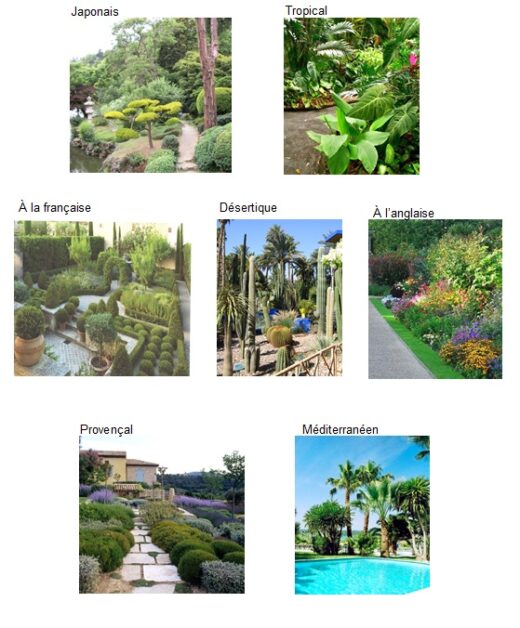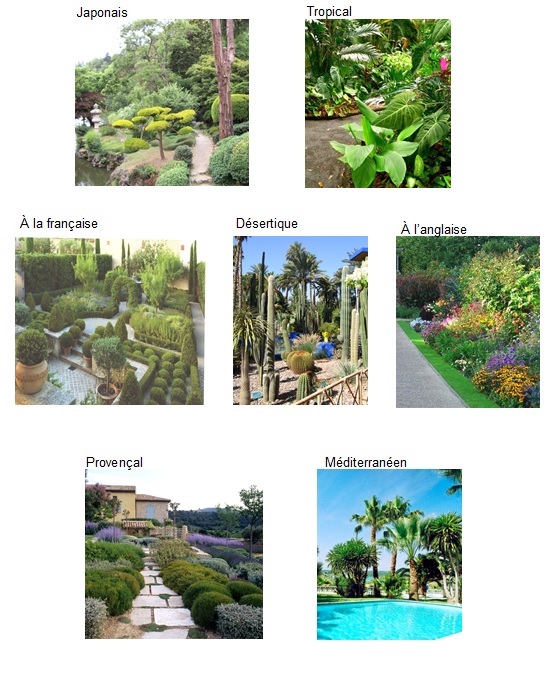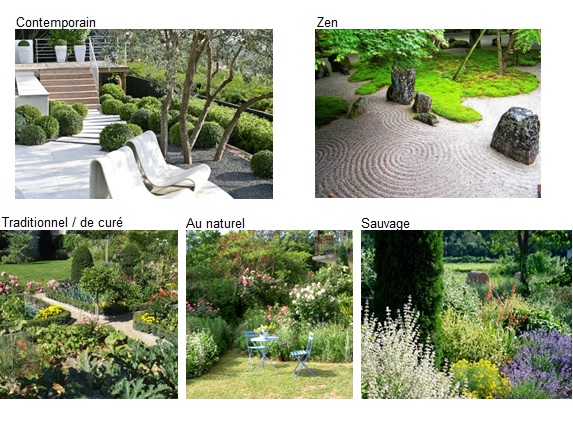
After having researched the smells, sounds and tastes you’d like to find in your garden design, today we’re going to look at the atmosphere or moods you’d like to give your outdoors.
Take a blank sheet of paper and jot down your answers, as this will help you later on.
First of all, describe the atmosphere you’re dreaming of:
A local ambience, in keeping with that which currently exists or exists in the vicinity.
Or maybe you’re looking for a holiday/travel vibe, here’s a selection:

> the provençal garden: this is Pagnol’s garden, the one that smells of garrigue, lavender and rosemary. The plants form balls and low carpets from which emerge explosions of purplish-blue or yellow flowers.
> le jardin Azuréen: this is the garden on the Croisette in Cannes, with its palm trees and lush green lawns, and a swimming pool will be its main attraction.
> the French garden: this is the garden of the parks of the Loire châteaux, with their straight, boxwood-lined paths. The art of topiary is practiced here: geometrical plant pruning (ball, pyramid, borders…), little room for folly, everything is mastered.
> the desert garden, where cactus, yucca and succulents grow on mineral soil… this is possible nowadays, even in northern France.
> the Japanese garden: takes up the notion of precisely pruned plants from the French garden, but without the straight borders and paths. Here, the paths are winding and the plants unaligned, giving free rein to the imagination and contemplation. Water is omnipresent, and the Japanese Pitch is inextricably linked with it.
> the English garden: flowerbeds overflowing with flowers frame English-style lawn paths worthy of the finest golf courses.
> the tropical garden: a garden of exuberance where large green leaves dominate, creating a luxuriant atmosphere that seems uncontrolled.
Or maybe you’re looking for a particular garden style: design/contemporary, zen…
Here are some explanations:
> a contemporary garden Design garden: also known as a design garden, this is a space that showcases the site, a particular plant (cloud tree), a work of art or designer furniture. It’s made up of a small variety of plant species, but with a high degree of repetition.
> A Zen garden: a cross between a Japanese garden and a design garden, its heart is often represented by a parterre of raked gravel.
>A traditional priest’s garden: separated by paths, the spaces are clearly differentiated (flower beds, vegetable gardens, fruit trees, etc.).
>A natural garden: a garden that respects the environment, local flora and fauna, is water-efficient, but still features cultivated plants. It’s the middle ground between the traditional garden and the wild.
>A wild garden: a garden that uses mostly wild plants from the surrounding area, with which it integrates as a real continuity, requiring very little maintenance (controlled nature). A haven for wildlife, bring nature into your garden…
And in pictures it looks like…

It’s then possible to mix moods and styles, or even in a large space to use several of them, as long as there’s a common thread between the different paintings.
The current trend in the latter case is to work to a precise, rigorous style between the entrance to the property and around the living area. The further you move away from these two zones, the more you let nature take over, leaving wild areas at the bottom of the garden that will serve as a refuge for biodiversity and reduce maintenance.
So, once you’ve defined the mood or style you want, you can use it as a guiding principle throughout the creation of your garden.
Next time, we’ll define your expectations regarding theuse of this future landscaping.
